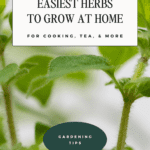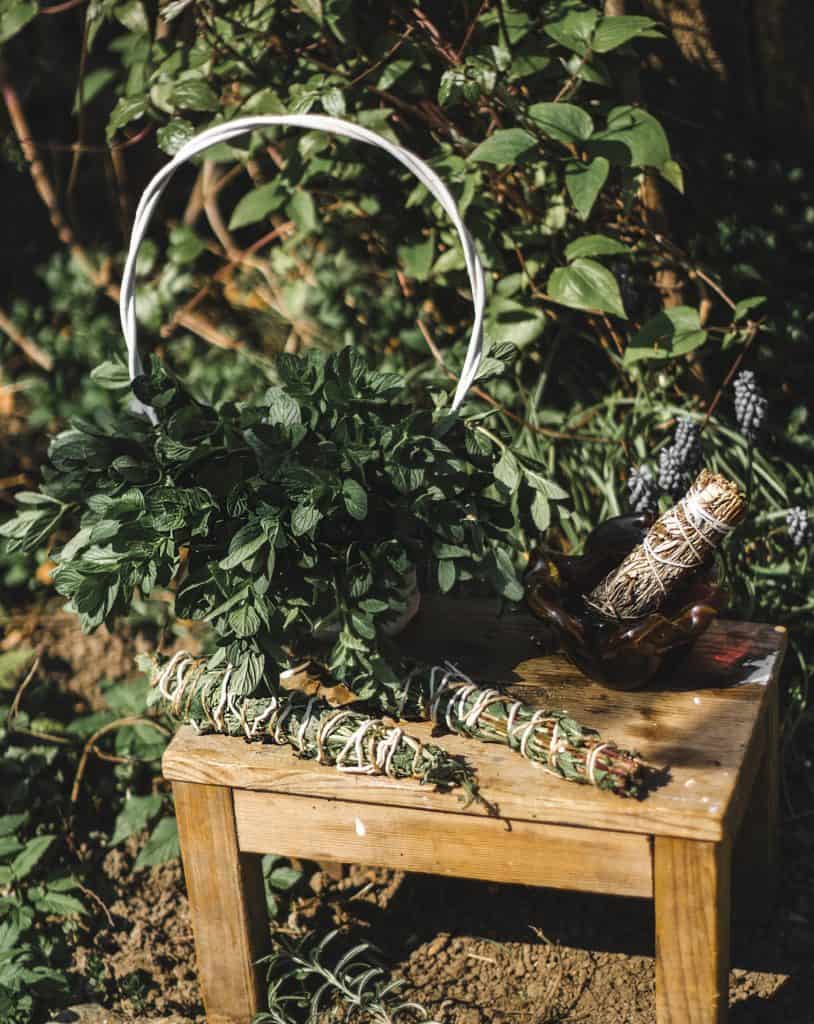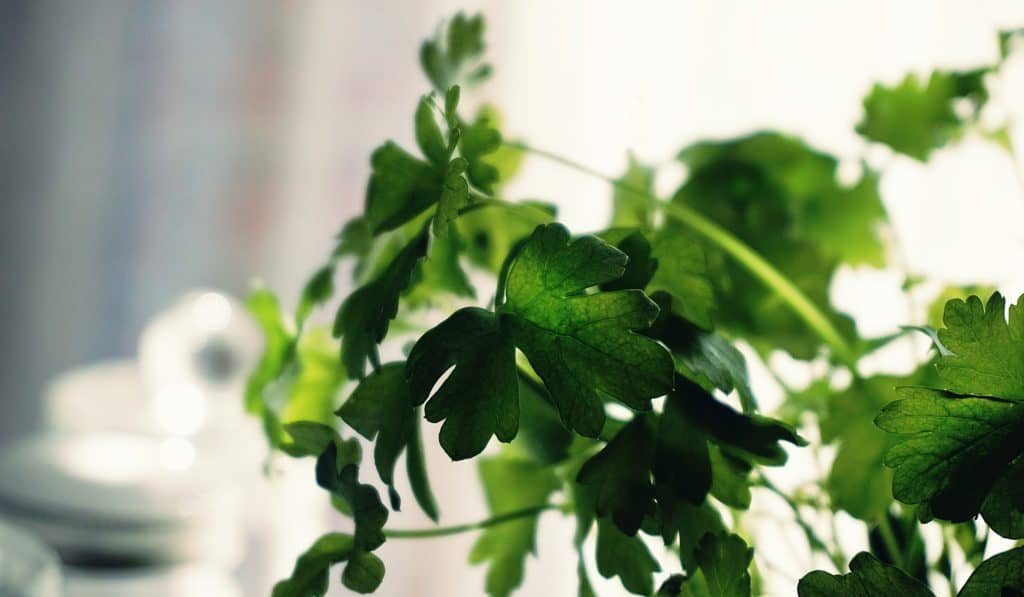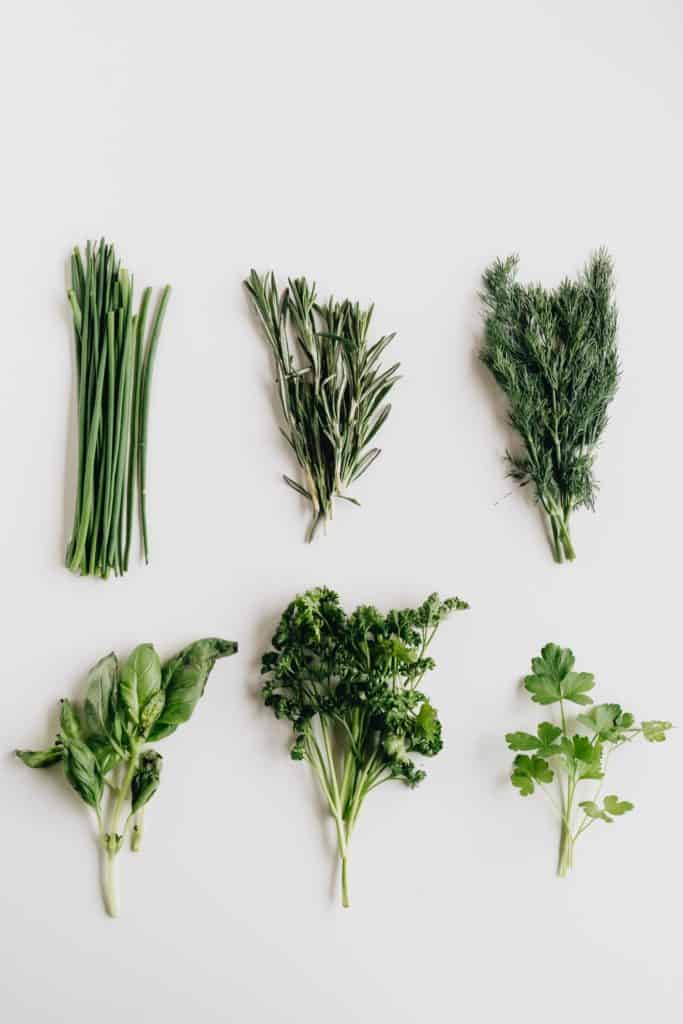
According to a recent study, 37% of gardeners found gardening easier than expected, while 24% found it more difficult.
This is unsurprising given that starting a garden can be a daunting task, especially if you don’t have a lot of experience.
However, herbs are a great place to start because they’re relatively easy to grow and don’t require a lot of care or maintenance.
There are many different types of herbs, but some of the easiest herbs you can grow for beginners include basil, parsley, mint, thyme, sage, and lavender.
With a little bit of effort, you can have a thriving herb garden in no time.
Affiliate Disclosure: Some of the links in this post are affiliate links. This means that if you click on the link and purchase an item, I will receive a commission at no extra cost to you. I only recommend stuff I love and would recommend to a friend.
Herbs are a great way to add flavor to your food, and they’re also a healthy addition to any diet.
Herbs are a wonderful addition to your garden because they just have so many uses. Medicinal, culinary, and more. For example, basil reportedly can help relieve anxiety, while sage has antimicrobial properties.
But just based on the flavor-boosting properties of herbs, setting aside space for them in your garden is a no-brainer. Herbs can elevate a boring dinner into a super tasty experience.
Health-wise, herbs have a lot of proven benefits. Studies have shown that including herbs in your diet can help improve heart health, brain function, and digestion, among other things.
So not only do they make your food taste better, but they’re also good for you. Double win!
If you’re new to gardening, herbs make a good place to start because they’re easy to grow and don’t require a lot of care or maintenance
Beginner gardeners can easily get overwhelmed with the plants they start learning how to garden with.
When you first start learning how to grow plants, you’re usually super enthusiastic and might end up with too many plants.
Don’t let this be you! Too many would-be gardeners quit during their first year because gardening was more work than they expected.
Planting herbs will reduce the likelihood that you’ll quit gardening due to frustrations with the time it takes to care for your plants. Herbs are easy to take care of compared to trickier plants, like trees, shrubs, and annual vegetables and flowers. Here’s why.
Many herbs can thrive in poor soil or dry areas
 Pin
PinHerbs are often some of the most resilient plants in the garden. Where other plants might wilt and die in poor soil or dry conditions, herbs often thrive.
This is because many herbs are native to regions with harsh growing conditions. As a result, they have developed ways to adapt and survive in difficult environments.
For example, rosemary is a drought-tolerant herb that originates from the Mediterranean. It has deep roots that help it to access water deep in the soil, and its use of essential oils helps it to retain moisture.
Similarly, lavender is another drought-tolerant herb that is able to survive on very little water. In fact, overwatering can actually be harmful to lavender, as it can encourage fungal growth.
So, if you’re looking for plants that can tolerate poor soil or dry conditions, then you might want to consider growing some herbs.
Herbs don’t need a lot of maintenance and you can just cut them back in the winter
Herbs are one of the simplest plants to grow in your garden and don’t require a lot of maintenance. You can just cut them back in the winter and they will bounce back in the spring. They are perfect for beginner gardeners or those who don’t have a lot of time to dedicate to their gardens.
Herbs can be perennials depending on your gardening zone and temperatures
Many herbs are perennial, meaning they will come back year after year with very little care from you.
Depending on your gardening zone and the average temperatures in your area, you can grow a wide variety of herbs as perennials. Common kitchen herbs like rosemary, thyme, oregano, and mint are all reasonably tolerant of different weather conditions, making them easy to grow as perennials.
However, it’s always a good idea to do a little research on the specific plant species you’re interested in to make sure they will thrive in your climate.
With a little effort, you can have a bountiful herb garden that provides fresh seasonings for years to come.
6 Easiest Herbs you can Grow
There are hundreds of great choices for herbs to grow in your home garden, but these six are some of the easiest for inexperienced gardeners to get started growing their green thumb.
Basil
 Pin
PinBasil is a fragrant herb that is often used in cooking. It has a sweet, peppery flavor that pairs well with tomatoes, garlic, and other Mediterranean flavors.
Basil is commonly used in pesto, and it can also be added to salads, pasta, soups, and sauces.
In addition to its culinary uses, basil is also known for its healing properties. It has been used to treat nausea and indigestion, and it is also thought to have anti-inflammatory and antibacterial effects.
Whether you’re looking to add flavor to your cooking or explore the world of herbal medicine, basil is a versatile herb worth considering.
Growing Basil
First, choose a spot in your garden or home that gets plenty of sunlight.
Then, prepare the soil or potting mix by adding some compost or other organic matter. Worm castings are a great, smell-free choice that isn’t so strong that it will burn your seedlings.
Once the soil is ready, you can sow the basil seeds. Sprinkle them over the top of your soil and then add the tiniest bit of soil on top of the seeds.
Make sure to keep the soil moist but not wet, and within a few weeks, you should see the seedlings start to appear.
When the plants are big enough, you can begin to harvest the leaves.
Simply cut them off at the stem, and your basil is ready to use. You can use basil fresh or dry it for later use.
Parsley
 Pin
PinParsley is a popular herb that has many uses both in the kitchen and in the garden.
Parsley can be used to add flavor to soups, stews, and sauces. It can also be used as a garnish for salads and other dishes.
Parsley is rich in antioxidants and has a whole host of nutritional benefits.
Some people have success using parsley as a base for an all-natural insecticide. Parsley has a lot of uses in Wicca, as well, which is interesting.
How to grow parsley
Growing parsley is easy, and it’s a great herb to have on hand in the kitchen.
Parsley is a biennial, which means that it takes two years to complete its life cycle. In its first year, parsley will grow leaves, and in its second year, it will produce flowers and seeds.
Parsley prefers full sun but will also do well in partial shade. It’s important to keep the soil moist but not too wet.
Be sure to water parsley at the base of the plant, rather than from above, to prevent mildew.
When harvesting parsley, cut the leaves about an inch from the ground. You can harvest parsley throughout the growing season.
To dry parsley, tie the stems together and hang them upside down in a dark, dry place.
Once the parsley is dry, strip the leaves from the stem and store them in an airtight container. Dried parsley will retain its flavor for about six months.
Parsley as a companion plant
In the garden, parsley can be used as a companion plant. Companion planting is a method of gardening in which different plants are grown together in order to benefit each other.
Parsley is known to attract helpful insects such as bees and ladybugs, and it also helps to deter harmful pests such as mosquitoes. As a result, planting parsley in your garden can help to improve the overall health of your plants.
Mint
 Pin
PinMint is a versatile herb that can be used in both sweet and savory dishes. Its refreshing flavor is a perfect complement to fruits and vegetables, and it can also be used to make tea or added to cocktails.
Mint can be used to add a refreshing flavor to dishes such as lamb, chicken, and salads. It can also be used to make teas and infused waters.
In addition to its culinary uses, mint has a long history of being used for medicinal purposes. It is thought to aid in digestion and can be used topically to soothe muscle aches and pains.
Mint can also be added to baths or made into a compress to help relieve congestion.
Growing mint
If you’re thinking about growing mint, there are a few things you should keep in mind.
First, mint is a very aggressive plant and can quickly take over your garden if left unchecked. It’s important to plant mint in a pot or container with drainage holes to prevent it from spreading.
Secondly, mint prefers moist, well-drained soil and full sun to partial shade. Be sure to water regularly, as mint is susceptible to root rot if the soil is too wet.
Lastly, pinch back the stems of your mint plants to encourage bushier growth. With a little care, you can enjoy fresh mint all season long!
Thyme
 Pin
PinThyme is a perennial herb that has been used for centuries in cooking and medicine.
The small, delicate leaves have a strong aroma and flavor that can enhance a variety of dishes.
Thyme is also a source of antioxidants and has anti-inflammatory properties. In addition to its culinary uses, thyme can also be used in skincare products, teas, and aromatherapy.
When used in skincare products, thyme extract can help to improve skin tone and texture.
When brewed as tea, thyme can help to soothe a sore throat or calm an upset stomach.
And when used in aromatherapy, thyme essential oil can help to reduce stress and promote relaxation.
Whether you’re cooking up a storm in the kitchen or looking for a natural way to relax, thyme may be just what you need.
Growing thyme
Growing thyme from seed can be a rewarding experience for any gardener. Not only is it a fun project, but it also allows you to have greater control over the size, shape, and color of your plants.
Plus, starting from seed is often cheaper than buying plants from a nursery.
To get started, simply purchase some quality thyme seeds from your local garden center or online retailer.
Then, fill a small pot with potting soil and lightly sprinkle the seeds on the surface. Be sure to mist the soil regularly to keep it moist, and keep the pot in a sunny spot.
In about two weeks, you should see little green sprouts poking through the soil.
Once the seedlings are big enough to handle, thin them out so that they have plenty of room to grow.
And that’s all there is to it! With a little patience and care, you’ll soon have a thriving thyme plant of your very own.
Sage
 Pin
PinSage is an herb that has a long history of use in both the culinary and medicinal realms.
In the kitchen, sage can be used to add flavor to a variety of dishes, from roasted meats to stuffings and sauces. Additionally, sage is thought to have many health benefits when consumed as tea.
Some of these potential benefits include improved digestion, reduced inflammation, and relief from cold and flu symptoms. Sage can also be used topically to treat wounds and skin irritation. When it comes to home remedies, sage is truly a versatile herb.
Growing sage
Are you interested in growing your own sage? This culinary herb is easy to grow and makes a nice addition to any kitchen windowsill garden. Here are a few tips for growing sage for beginners.
Start by planting sage in well-draining soil in a sunny spot. Sage can tolerate some drought, but it will do best if you water it regularly.
Once your sage plants are established, fertilize them once or twice a year with a balanced fertilizer.
When the weather warms up in spring, cut back your sage plants to encourage new growth.
And finally, don’t forget to harvest your sage leaves regularly – this will keep your plants healthy and prevent them from becoming too woody.
Lavender
 Pin
PinMost people are familiar with the soothing scent of lavender, but this versatile herb can be used for much more than just fragrance.
Lavender oil is a popular ingredient in many cosmetics and body care products, and it is often used to treat skin conditions such as acne and eczema.
Lavender is also a natural insect repellent, and it can be used to deter moths, mosquitoes, and flies.
In the garden, lavender makes an attractive addition to any flower bed, and it can also help to keep pests away from other plants.
Additionally, dried lavender leaves can be used to make a fragrant potpourri or sachet.
Whether you’re looking for a unique gift idea or simply want to enjoy the benefits of this versatile herb, lavender is a killer addition to any garden.
Growing lavender
While it is relatively easy to care for, there are a few things to keep in mind in order to ensure that your lavender thrives.
First, make sure to plant your lavender in well-drained soil. Lavender does not like to sit in wet soil, as this can lead to root rot.
Second, give your lavender plenty of sunlight. Lavender loves the sun and will bloom best when it receives at least six hours of sunlight each day.
Lastly, make sure to water your lavender regularly. The soil should be kept moist, but not soggy. With just a little bit of care, you can enjoy healthy and beautiful lavender plants for years to come.
These were the easiest herbs to grow in your garden for beginners! If you’re interested in starting your own herb garden, these herbs provide a great place to start.
If you plan to use herbs for medicinal reasons and are new to that idea, it’s best to consult with your doctor first, especially if you have any medications you’re taking. (Some herbs and spices can interact with prescriptions!)
Herbs are sich a great way to get started gardening since they don’t need as much care and pest prevention as many other plants. No matter what you choose to plant, get out there and grow. ✌
Related reading:

